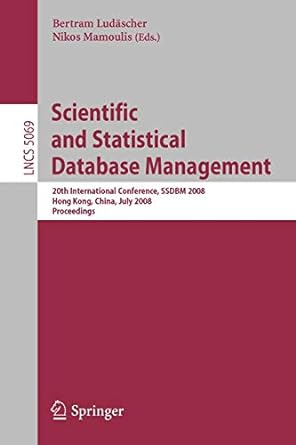Answered step by step
Verified Expert Solution
Question
1 Approved Answer
Assume the following tables and attributes: CUST: cid - int (4 bytes) name - char(20) (20 bytes) age - int (4 bytes) - range 21
- Assume the following tables and attributes:
CUST: cid - int (4 bytes)
name - char(20) (20 bytes)
age - int (4 bytes) - range 21 to 60
address - char(50) (50 bytes)
state - char(2) (2 bytes)
ITEM: cid - int (4 bytes)
itemid - int (4 bytes)
price - int (4 bytes) - range $1 to $100
description - char(50) (50 bytes)
- CUST is located on site 1; ITEM is located on site 2.
- There is a one-to-many relationship between CUST and ITEM where cid is the foreign key of CUST (on cid) in the ITEM table.
- CUST has hashed indexes on cid.
- There is NO index on the ITEM table.
- There are 100 CUST records and 1000 ITEM records.
- TTR is the network transfer cost per byte.
- TCPU is the cost of a CPU instruction (including disk I/O)
- TMSG is the cost of initiating and receiving a message.
- There are only two distinct states in the CUST table records (MD and VA).
Given the query: SELECT name, state, description
FROM CUST, ITEM
WHERE CUST.cid = ITEM.cid and
CUST.age > 50 and
ITEM.price > 30 and
ITEM.price <= 50
What single modification to the database would enable an even lower cost query plan? (I am not looking for a semi-join.)
Step by Step Solution
There are 3 Steps involved in it
Step: 1

Get Instant Access to Expert-Tailored Solutions
See step-by-step solutions with expert insights and AI powered tools for academic success
Step: 2

Step: 3

Ace Your Homework with AI
Get the answers you need in no time with our AI-driven, step-by-step assistance
Get Started


